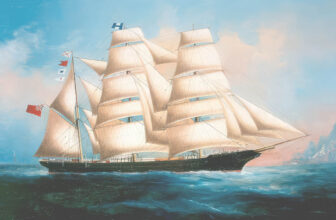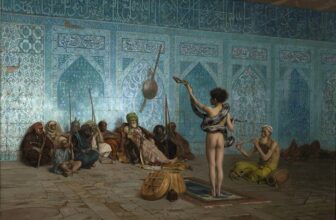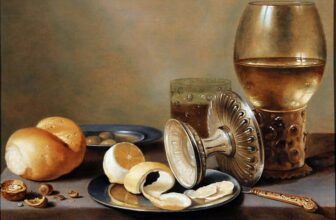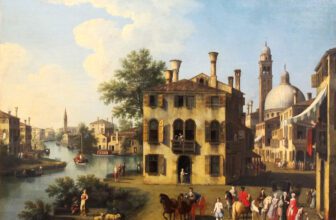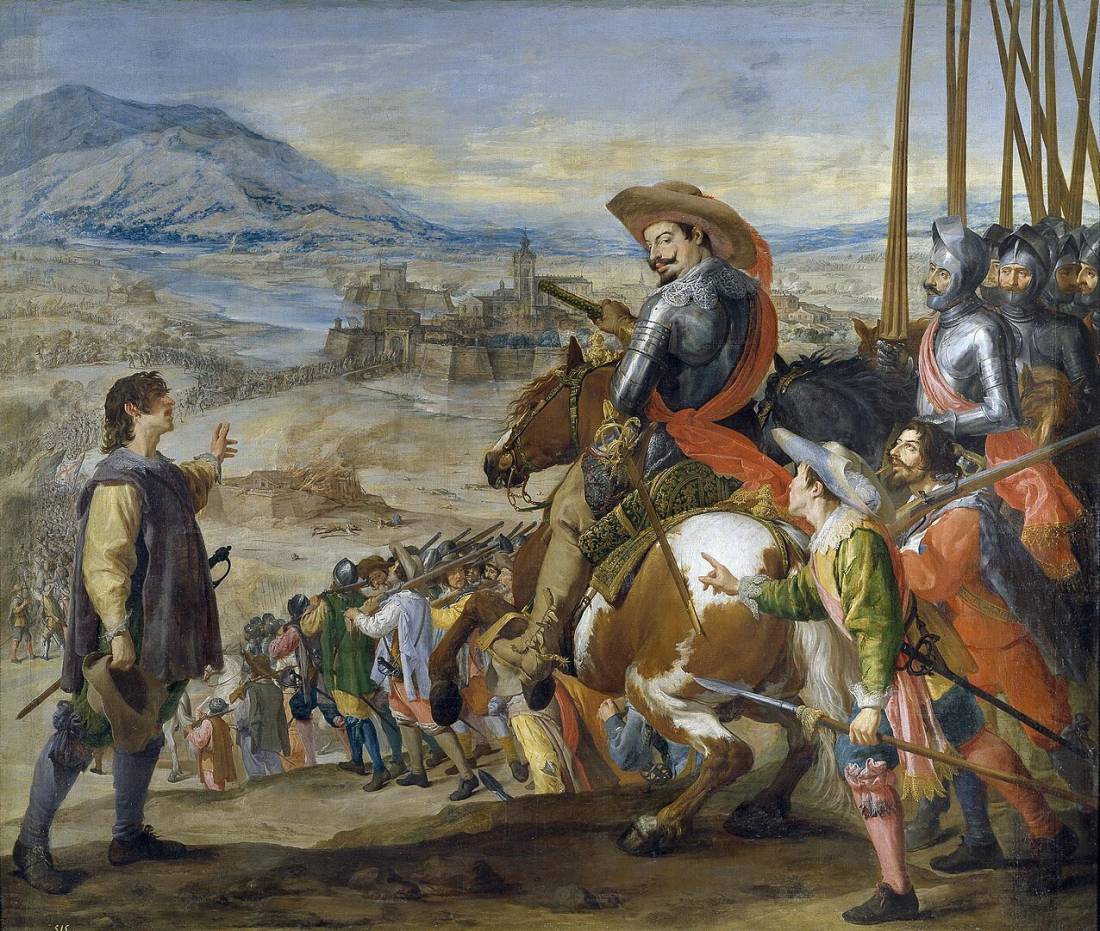
How to Recognize Spanish Baroque Antique Paintings
The Spanish Baroque period produced some of the most emotional, dramatic, and spiritually powerful paintings in European art history. From Diego Velázquez and Francisco de Zurbarán to Bartolomé Esteban Murillo and José de Ribera, these artists transformed religious devotion, realism, and theatricality into a visual language that continues to captivate viewers today.
Recognizing an authentic Spanish Baroque antique painting requires more than an appreciation of beauty , it demands an understanding of the historical, stylistic, and material clues that define this fascinating era. Whether you’re a collector, curator, or simply an art enthusiast, this comprehensive guide will help you identify, analyze, and appreciate the unmistakable characteristics of Spanish Baroque art.
1. Historical Context: The Baroque Era in Spain (1600–1750)
To recognize a Spanish Baroque painting, it’s essential to first understand the historical and cultural environment that shaped the artists and their work.
1.1 The Counter-Reformation and Catholic Devotion
Spain in the 17th century was one of the most devoutly Catholic nations in Europe. The Counter-Reformation, led by the Catholic Church in response to Protestantism, encouraged religious art that inspired faith and emotion. Paintings were not just decorative , they were tools of spiritual persuasion.
Spanish Baroque painters took this mission seriously. Their works often depicted saints, martyrs, and biblical scenes with deep emotional realism designed to move the viewer’s soul.
1.2 Royal Patronage and Artistic Centers
The Spanish monarchy , particularly under Philip IV , provided lavish patronage to artists. Madrid, Seville, Valencia, and Naples (then under Spanish control) became thriving centers of Baroque art.
King Philip IV’s court painter, Diego Velázquez, was instrumental in shaping Spain’s artistic identity. Meanwhile, religious orders commissioned altarpieces, devotional images, and portraits of saints across monasteries and churches throughout the empire.
2. Defining Features of Spanish Baroque Painting
2.1 Dramatic Realism and Emotional Intensity
The most striking feature of Spanish Baroque painting is its realism combined with spiritual drama. Artists used light, composition, and naturalistic detail to create scenes that felt both human and divine.
Key traits include:
Lifelike figures painted with anatomical precision
Emotional expressions that convey suffering, ecstasy, or devotion
Tangible textures , rough cloth, weathered skin, metallic gleam , rendered with incredible realism
Unlike Italian Baroque, which often glorified grandeur and idealized beauty, the Spanish version was raw, austere, and morally serious.
2.2 Tenebrism: The Power of Light and Shadow
Borrowing from Caravaggio’s influence, Spanish artists mastered tenebrism , the sharp contrast between light and dark to highlight key figures or gestures.
A typical Spanish Baroque painting often features:
A dark background, suggesting mystery or divine presence
A single light source, illuminating the subject’s face or hands
A sense of spiritual revelation, as light becomes symbolic of God’s grace
This theatrical illumination draws the viewer’s eye to the central emotional focus, creating a sense of immediacy and reverence.
2.3 Religious Iconography and Symbolism
Because of Spain’s strong Catholic identity, religious iconography dominates the Baroque period. Recognizing these symbolic elements helps identify Spanish works:
Saints and Martyrs: Look for attributes such as St. Peter’s keys, St. Francis’s brown habit, or St. Catherine’s wheel.
The Virgin Mary: Often portrayed as the Immaculate Conception, dressed in white and blue, surrounded by cherubs and crescent moons.
Still-Life Objects (Bodegones): Everyday items , bread, wine, skulls, candles , carry spiritual meaning, reminding viewers of mortality and salvation.
Spanish Baroque painters mastered the fusion of realism and religious allegory, transforming humble objects into sacred symbols.
3. Major Artists and Regional Styles
Understanding which artist or school a painting belongs to can help authenticate its origins. The Spanish Baroque is not monolithic , regional variations give valuable clues.
3.1 Diego Velázquez (1599–1660): Court Painter of Spain
Perhaps the greatest Spanish Baroque master, Velázquez is known for his refined realism and psychological depth.
Recognizable features:
Subtle, controlled light (less theatrical than Caravaggio)
Naturalistic textures and soft brushwork
Complex compositions that blend portraiture with genre scenes
Signature works:
Las Meninas (1656) , a masterpiece of perspective and realism
The Water Seller of Seville , a humble yet majestic portrayal of everyday life
Velázquez’s paintings combine royal grandeur with intimate human observation, making them hallmarks of Spanish classicism within the Baroque.
3.2 Francisco de Zurbarán (1598–1664): The Painter of Monks and Saints
Zurbarán’s style is austere and meditative, emphasizing spirituality over drama. His saints often appear in stark isolation, emerging from deep shadows into mystical light.
Identifying features:
Monastic subjects with contemplative expressions
Simple compositions and humble settings
Strong chiaroscuro, emphasizing spiritual solitude
Notable works:
Saint Serapion (1628) , a haunting depiction of martyrdom
Still Life with Lemons, Oranges, and a Rose , a devotional still life symbolizing purity and sacrifice
3.3 Bartolomé Esteban Murillo (1617–1682): The Painter of Grace and Tenderness
Murillo’s art contrasts with Zurbarán’s severity. He infused religious scenes with softness, light, and humanity.
Key characteristics:
Warm, golden tones and gentle modeling
Idealized, sentimental faces (especially of the Virgin Mary and children)
Graceful compositions that evoke divine compassion
Famous works:
The Immaculate Conception (multiple versions)
The Young Beggar , a tender portrayal of Seville’s poor
Murillo’s style became immensely popular, influencing both religious art and later Romanticism.
3.4 José de Ribera (1591–1652): The Spanish Tenebrist in Italy
Born in Spain but active in Naples, Ribera embodied the Caravaggesque intensity of light and realism.
Telltale signs:
Gritty realism , wrinkled faces, dirt-stained hands, muscular bodies
Brutal depictions of martyrdom and suffering
Strong diagonal compositions with concentrated light sources
Masterpieces include:
The Martyrdom of Saint Bartholomew
The Clubfooted Boy
Ribera’s works exemplify the earthy, visceral energy that made Spanish Baroque painting so powerful.
4. Techniques and Materials Used in Spanish Baroque Painting
4.1 Pigments and Color Palette
Authentic Spanish Baroque paintings were created using natural mineral and organic pigments mixed with oil on canvas or wooden panels. Common pigments include:
Lead white – for flesh tones and highlights
Ochres and umbers – for earthy hues
Vermilion and carmine – for deep reds
Azurite or ultramarine – for the Virgin’s blue robes
Lamp black – for backgrounds and shadows
The overall palette is often muted and somber, reflecting the ascetic spirituality of the period rather than the exuberance of Italian or Flemish Baroque art.
4.2 Brushwork and Surface Texture
Look closely at the surface handling:
Early Baroque painters favored tight, detailed brushwork, especially for religious commissions.
Velázquez and Murillo introduced looser, more painterly techniques, where brushstrokes suggest rather than define form.
The impasto technique , where paint is thickly applied , appears subtly in highlights (such as jewels, light reflections, or metallic objects).
Examining the brushstroke direction under magnification can also reveal whether the piece is from the 17th century or a later imitation.
4.3 Canvas, Panel, and Ground Preparation
Most Spanish Baroque paintings were executed on linen canvas, sometimes lined with gesso and red-brown ground layers. Earlier works may appear on wood panels, particularly for smaller devotional pieces.
Over centuries, natural aging creates craquelure (fine cracks in the paint surface), oxidation of varnish, and darkened glazes , signs that can help authenticate a work but also complicate restoration efforts.
5. How to Identify Authentic Spanish Baroque Paintings
Recognizing an authentic Spanish Baroque painting involves analyzing style, materials, subject matter, and provenance. Here’s a practical checklist for collectors and curators.
5.1 Examine the Subject Matter
Is the theme religious, moral, or genre-based? Spanish Baroque paintings rarely depict mythological or erotic themes. Instead, they focus on:
Biblical narratives (The Annunciation, The Crucifixion, The Adoration of the Shepherds)
Portraits of saints and monks
Humble still lifes with symbolic undertones
Scenes of ordinary people imbued with dignity and faith
If the subject combines everyday realism with spiritual depth, it likely belongs to the Spanish Baroque tradition.
5.2 Analyze the Light Source and Composition
Spanish Baroque paintings usually have:
One dominant light source creating a dramatic spotlight effect
Deep, dark backgrounds that isolate the figures
Diagonal or pyramidal compositions guiding the viewer’s eye toward the sacred focus
If the light seems to “reveal” the subject as if from divine illumination, you’re likely looking at a Baroque masterpiece.
5.3 Observe the Palette and Pigment Aging
Under UV light or microscopic inspection:
Authentic 17th-century pigments exhibit crystal structures and age-related fluorescence.
Modern reproductions often use synthetic pigments that age differently.
Oxidized varnish creates a warm amber tone typical of old master paintings.
5.4 Evaluate Brushwork and Artistic Signature
Many Spanish Baroque painters did not sign their works, so stylistic analysis is key. Compare brushwork, anatomy, and light effects to known examples by Velázquez, Zurbarán, Ribera, or Murillo.
For instance:
Velázquez: fluid, confident strokes and masterful glazing
Zurbarán: crisp contours, matte finishes
Murillo: delicate blending and sentimental expressions
Ribera: thick, rough impasto and muscular realism
5.5 Check Provenance and Restoration Records
An authentic Spanish Baroque painting often comes with documentation of ownership, museum catalog references, or previous restoration reports.
Look for provenance linking the piece to Spanish monasteries, royal collections, or early European collectors.
Beware of “Baroque-style” paintings produced in the 19th century , these are often revival works imitating the originals.
6. Comparing Spanish Baroque to Italian, Flemish, and French Baroque Styles
Distinguishing Spanish Baroque from its European counterparts can help confirm its authenticity.
| Feature | Spanish Baroque | Italian Baroque | Flemish Baroque | French Baroque |
|---|---|---|---|---|
| Mood | Somber, spiritual, introspective | Dramatic, theatrical | Lush, decorative | Elegant, classical |
| Color Palette | Earthy, subdued | Rich and vibrant | Bright and saturated | Controlled, pastel tones |
| Subject Matter | Religious devotion, realism | Grand narratives | Mythological and allegorical | Royal portraiture |
| Technique | Tenebrism, simplicity | Dynamic movement | Ornate textures | Balanced symmetry |
Spanish Baroque stands out for its moral seriousness and emotional realism, reflecting the soul of a deeply religious society.
7. The Role of Still Life and Genre Painting (Bodegones)
While large religious works dominated church altars, Spanish artists also excelled at bodegones , still lifes and genre scenes depicting ordinary people.
A bodegón might show:
A table with bread, fruit, and wine
A humble kitchen scene
A beggar, peasant, or servant at work
Though seemingly secular, these works often carried moral or spiritual undertones, symbolizing humility, charity, or the fleeting nature of life.
Painters like Juan Sánchez Cotán pioneered this style with meticulous geometric arrangements and silent, meditative energy , precursors to modern minimalist aesthetics.
8. How to Authenticate and Preserve Spanish Baroque Art
8.1 Authentication Methods
To verify authenticity:
Scientific analysis – X-ray, infrared reflectography, and pigment testing reveal underdrawings and materials consistent with 17th-century techniques.
Expert attribution – Art historians specializing in Spanish Baroque can match style, composition, and iconography to specific artists or workshops.
Provenance documentation – Auction records, estate inventories, or church archives often confirm ownership history.
8.2 Conservation and Care
Baroque paintings are delicate. To preserve them:
Maintain stable humidity and temperature (avoid direct sunlight).
Use museum-grade glass or acrylic when framing.
Avoid over-cleaning; old varnish layers may contain historical value.
Consult professional restorers familiar with oil painting conservation to remove yellowed varnish or repair flaking paint.
9. Why Spanish Baroque Paintings Matter Today
Spanish Baroque art remains highly sought after by collectors, scholars, and museums worldwide. Its enduring appeal lies in its fusion of realism and spirituality, its psychological depth, and its timeless emotional power.
Each painting invites viewers into a dialogue between earthly suffering and divine grace, bridging the sacred and the human. Whether viewed in a cathedral in Seville or a museum in New York, Spanish Baroque paintings remind us of art’s ability to move hearts across centuries.
10. Quick Reference: How to Recognize a Spanish Baroque Antique Painting
Checklist Summary:
- Deep chiaroscuro (tenebrism) with single light sourceReligious or moral subject matter
- Earthy, muted color palette
- Realistic, emotionally charged figures
- Minimal background or architectural elements
- Signs of aging: craquelure, oxidized varnish, natural pigmentsStylistic resemblance to Velázquez, Zurbarán, Murillo,
- or Ribera Historical provenance linking to 1600–1750 Spain
Seeing the Divine in the Real
Recognizing a Spanish Baroque antique painting is both a technical and emotional journey. Beyond stylistic traits or pigment analysis, these works embody a worldview , one where light conquers darkness, faith transcends suffering, and beauty emerges from humility.
From Velázquez’s royal portraits to Zurbarán’s meditative saints, each brushstroke tells the story of a nation at the height of its spiritual and artistic power. To truly recognize a Spanish Baroque painting is to see through its surface , into the devotion, discipline, and drama that defined an entire era of human creativity.
